Effect of Different Control Strategies on the Heat Transfer Mechanism of Helical Energy Piles
Abstract
:1. Introduction
2. Methods
2.1. Physical Model
2.2. Boundary and Initial Conditions
2.3. Comparison of the Effect of Energy Pile Type on Heat Transfer
2.4. Grid-Independent Analysis and Model Validation
3. Results
3.1. Influence Law of Spiral Pitch on Heat Transfer Rate and Temperature in Some Local Positions of Energy Piles
3.2. Law of Influence of Helical Pitch on Average Temperature of Various Regions of Energy Piles
3.3. Relationship between Spiral Tube Design and Convection Heat Transfer Coefficient
4. Conclusions
Author Contributions
Funding
Institutional Review Board Statement
Informed Consent Statement
Data Availability Statement
Conflicts of Interest
Nomenclature
| T | Temperature, K |
| P | Helical pitch, m |
| rs | Helix radius, m |
| d | Diameter of spiral tube, m |
| de | Characteristic length, m |
| h | Height, m |
| L | Length, m |
| ρ | Densities, kg/m3 |
| cp | Specific heat capacity, J/kg∙K |
| k | Thermal conductivity, W/m∙K |
| q | Heat flux, J/m2 |
| αaff | Convective heat transfer coefficient, W/m2∙K |
| u | Flow velocity, m/s |
| Φ | Heat transmission, J |
| R | Dimensionless equivalent thermal resistance |
| θ | Dimensionless temperature |
| Re | Reynolds number |
| Pr | Prandtl number |
| Fo | Fourier number |
| Nu | Nussle number |
| C | Inaccuracy |
| Q | Heat exchange, W |
| Greek alphabet | |
| τ | Time, s |
| μ | Dynamic viscosity, Pa∙s |
| ν | Kinematic viscosity, m2/s |
| ε | Correction factor |
| γ | Volume ratio |
| Suffix | |
| st | Tubes |
| sp | Spiral tube |
| f | Fluid |
| g | Soil |
| p | Pile |
| b | Pile wall |
| int | Internal |
| ext | External |
| avg | Average |
| tube | Tube wall |
References
- Mastrucci, A.; van Ruijven, B.; Byers, E.; Poblete-Cazenave, M.; Pachauri, S. Global scenarios of residential heating and cooling energy demand and CO2 emissions. Clim. Chang. 2021, 168, 14. [Google Scholar] [CrossRef]
- Nejat, P.; Jomehzadeh, F.; Taheri, M.M.; Gohari, M.; Majid, M.Z.A. A global review of energy consumption, CO2 emissions and policy in the residential sector (with an overview of the top ten CO2 emitting countries). Renew. Sustain. Energy Rev. 2015, 43, 843–862. [Google Scholar] [CrossRef]
- Ürge-Vorsatz, D.; Cabeza, L.F.; Serrano, S.; Barreneche, C.; Petrichenko, K. Heating and cooling energy trends and drivers in buildings. Renew. Sustain. Energy Rev. 2015, 41, 85–98. [Google Scholar] [CrossRef]
- DiPippo, R. Geothermal energy as a source of electricity. A worldwide survey of the design and operation of geothermal power plants. NASA STI Recon Tech. Rep. N 1980, 81, 12579. [Google Scholar]
- Zhu, W.; Lu, C.; Wu, Z. A review of soil source heat pump modelling experiments and soil heat balance studies. Build. Energy Conserv. 2022, 50, 103–110, (In Chinese and English). [Google Scholar]
- Gao, J.; Zhang, X.; Liu, J.; Li, K.S.; Yang, J. Thermal performance and ground temperature of vertical pile-foundation heat exchangers: A case study. Appl. Therm. Eng. 2008, 28, 2295–2304. [Google Scholar] [CrossRef]
- Park, H.; Lee, S.-R.; Yoon, S.; Choi, J.-C. Evaluation of thermal response and performance of PHC energy pile: Field experiments and numerical simulation. Appl. Energy 2013, 103, 12–24. [Google Scholar] [CrossRef]
- Zarrella, A.; De Carli, M.; Galgaro, A. Thermal performance of two types of energy foundation pile: Helical pipe and triple U-tube. Appl. Therm. Eng. 2013, 61, 301–310. [Google Scholar] [CrossRef]
- Bezyan, B.; Porkhial, S.; Mehrizi, A.A. 3-D simulation of heat transfer rate in geothermal pile-foundation heat exchangers with spiral pipe configuration. Appl. Therm. Eng. 2015, 87, 655–668. [Google Scholar] [CrossRef]
- Park, S.; Lee, D.; Choi, H.-J.; Jung, K.; Choi, H. Relative constructability and thermal performance of cast-in-place concrete energy pile: Coil-type GHEX (ground heat exchanger). Energy 2015, 81, 56–66. [Google Scholar] [CrossRef]
- Miyara, A. Thermal performance and pressure drop of spiral-tube ground heat exchangers for ground-source heat pump. Appl. Therm. Eng. 2015, 90, 630–637. [Google Scholar]
- Park, S.; Sung, C.; Jung, K.; Sohn, B.; Chauchois, A.; Choi, H. Constructability and heat exchange efficiency of large diameter cast-in-place energy piles with various configurations of heat exchange pipe. Appl. Therm. Eng. 2015, 90, 1061–1071. [Google Scholar] [CrossRef]
- Zhao, Q.; Liu, F.; Liu, C.; Tian, M.; Chen, B. Influence of spiral pitch on the thermal behaviors of energy piles with spiral-tube heat exchanger. Appl. Therm. Eng. 2017, 125, 1280–1290. [Google Scholar] [CrossRef]
- Qiang, Z. Study on the Heat Transfer of Spiral-Tube Heat Exchangers in Energy Piles. Ph.D. Dissertation, Shan-dong University, Jinan, China, 2018. (In Chinese). [Google Scholar]
- Liu, X.; Xiao, Y.; Fu, X.; Wu, H. Experimental study on heat transfer performance of ground source heat pump pile foundation spiral buried pipe. J. HVAC 2013, 43, 107–110. (In Chinese) [Google Scholar]
- Cecinato, F.; Loveridge, F.A. Influences on the thermal efficiency of energy piles. Energy 2015, 82, 1021–1033. [Google Scholar] [CrossRef]
- Javadi, H.; Ajarostaghi, S.S.M.; Pourfallah, M.; Zaboli, M. Performance analysis of helical ground heat exchangers with different configurations. Appl. Therm. Eng. 2019, 154, 24–36. [Google Scholar] [CrossRef]
- Javadi, H.; Ajarostaghi, S.S.M.; Mousavi, S.S.; Pourfallah, M. Thermal analysis of a triple helix ground heat exchanger using numerical simulation and multiple linear regression. Geothermics 2019, 81, 53–73. [Google Scholar] [CrossRef]
- Yang, K.; Katsura, T.; Nagasaka, S.; Nagano, K. Development and application of a new calculation method for double spiral ground heat exchangers. Energy Build. 2023, 291, 113144. [Google Scholar] [CrossRef]
- Yan, Z.; Zeng, S.; Yang, J. A novel mathematical model for heat transfer of energy pile and its applicability in thermal response test. J. Cent. South Univ. 2022, 53, 4731–4740. [Google Scholar]
- Zhang, H.; Han, Z.; Li, G.; Ji, M.; Cheng, X.; Li, X.; Yang, L. Study on the influence of pipe spacing on the annual performance of ground source heat pumps considering the factors of heat and moisture transfer, seepage and freezing. Renew. Energy 2021, 163, 262–275. [Google Scholar] [CrossRef]
- Molina-Giraldo, N.; Blum, P.; Zhu, K.; Bayer, P.; Fang, Z. A moving finite line source model to simulate borehole heat exchangers with groundwater advection. Int. J. Therm. Sci. 2011, 50, 2506–2513. [Google Scholar] [CrossRef]
- Antelmi, M.; Turrin, F.; Zille, A.; Fedrizzi, R. A new type in TRNSYS 18 for simulation of borehole heat exchangers affected by different groundwater flow velocities. Energies 2023, 16, 1288. [Google Scholar] [CrossRef]
- Jia, G.S.; Ma, Z.D.; Xia, Z.H.; Wang, J.W.; Zhang, Y.P.; Jin, L.W. Influence of groundwater flow on the ground heat exchanger performance and ground temperature distributions: A comprehensive review of analytical, numerical and experimental studies. Geothermics 2022, 100, 102342. [Google Scholar] [CrossRef]
- Gao, W.; Zhang, P.; Pan, Y.; Wang, Y. Analysis of heat transfer performance of double-helix embedded energy pile. J. Qingdao Univ. Technol. 2022, 43, 28–36. (In Chinese) [Google Scholar]
- Wang, K.; Yao, H.; Zhao, S.; Zhang, W. Progress of heat transfer simulation and optimization of buried pipe heat exchangers. Dist. Heat. 2022, 92–105. (In Chinese) [Google Scholar] [CrossRef]
- Boban, L.; Miše, D.; Herceg, S.; Soldo, V. Application and design aspects of ground heat exchangers. Energies 2021, 14, 2134. [Google Scholar] [CrossRef]
- Aresti, L.; Christodoulides, P.; Florides, G. A review of the design aspects of ground heat exchangers. Renew. Sustain. Energy Rev. 2018, 92, 757–773. [Google Scholar] [CrossRef]
- Man, Y.; Yang, H.; Diao, N.; Liu, J.; Fang, Z. A new model and analytical solutions for borehole and pile ground heat exchangers. Int. J. Heat Mass Transf. 2010, 53, 2593–2601. [Google Scholar] [CrossRef]
- Chen, S.; Zhao, L. Comparative analysis of thermal-mechanical response characteristics of energy group piles and single piles. J. Undergr. Space Eng. 2022, 18, 788–800. (In Chinese) [Google Scholar]

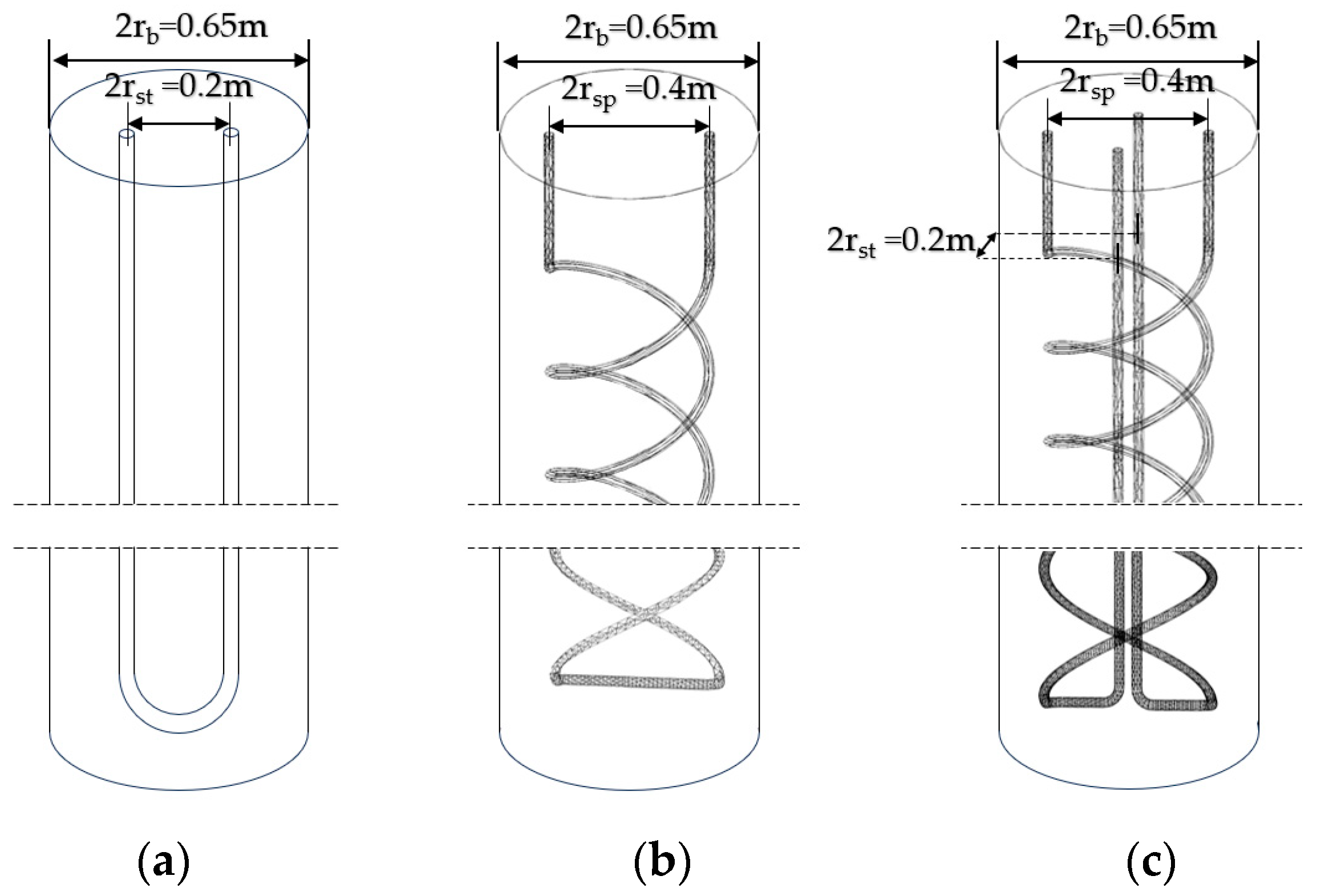

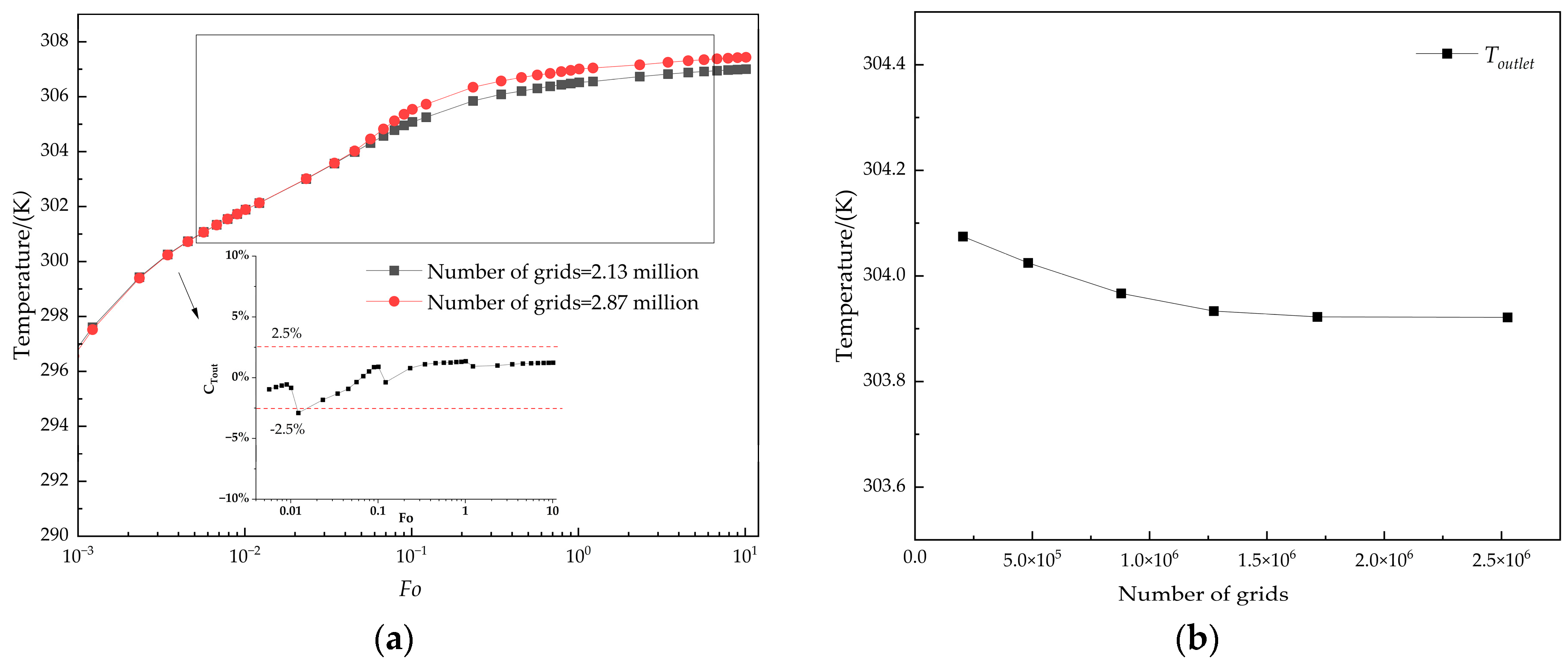
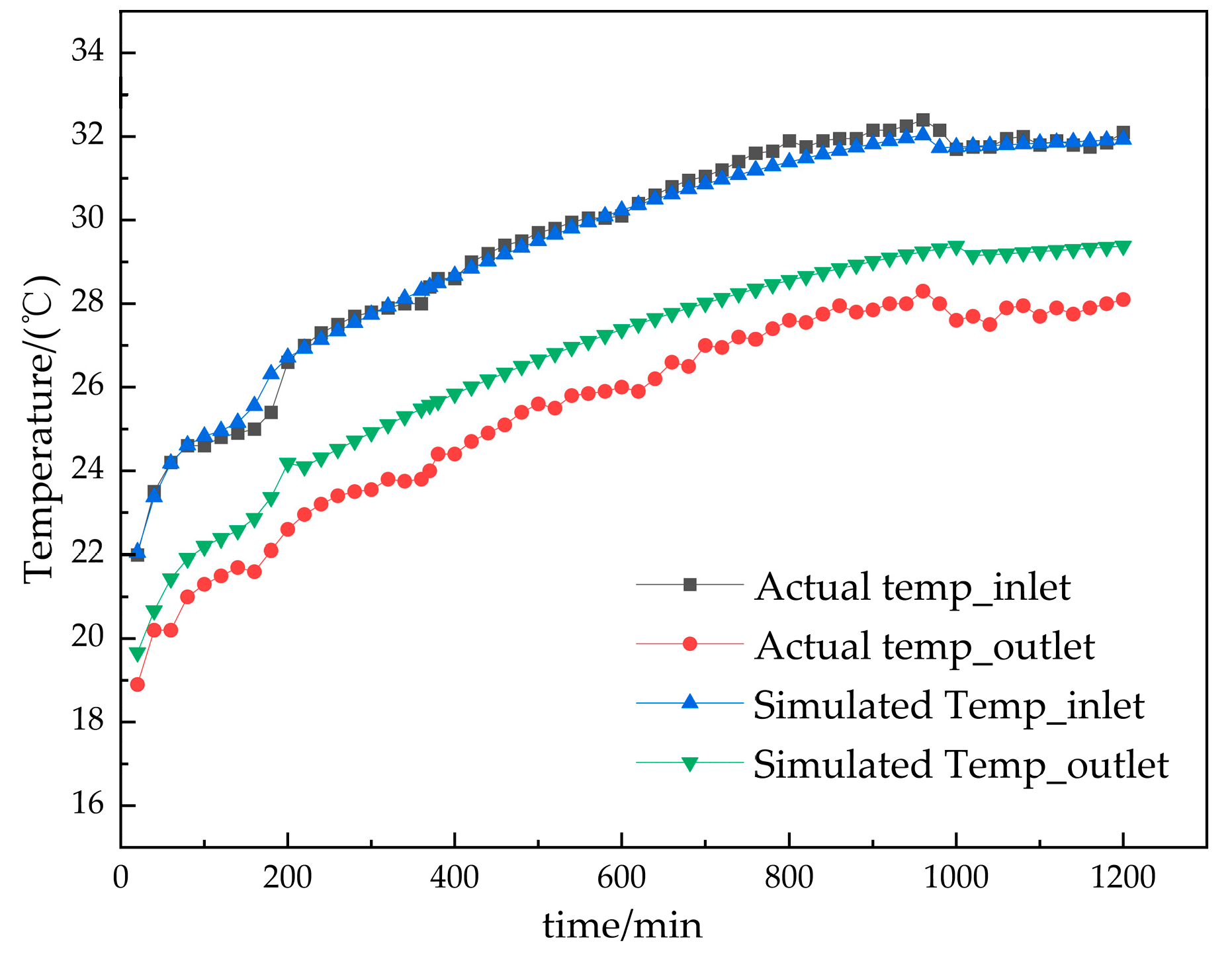
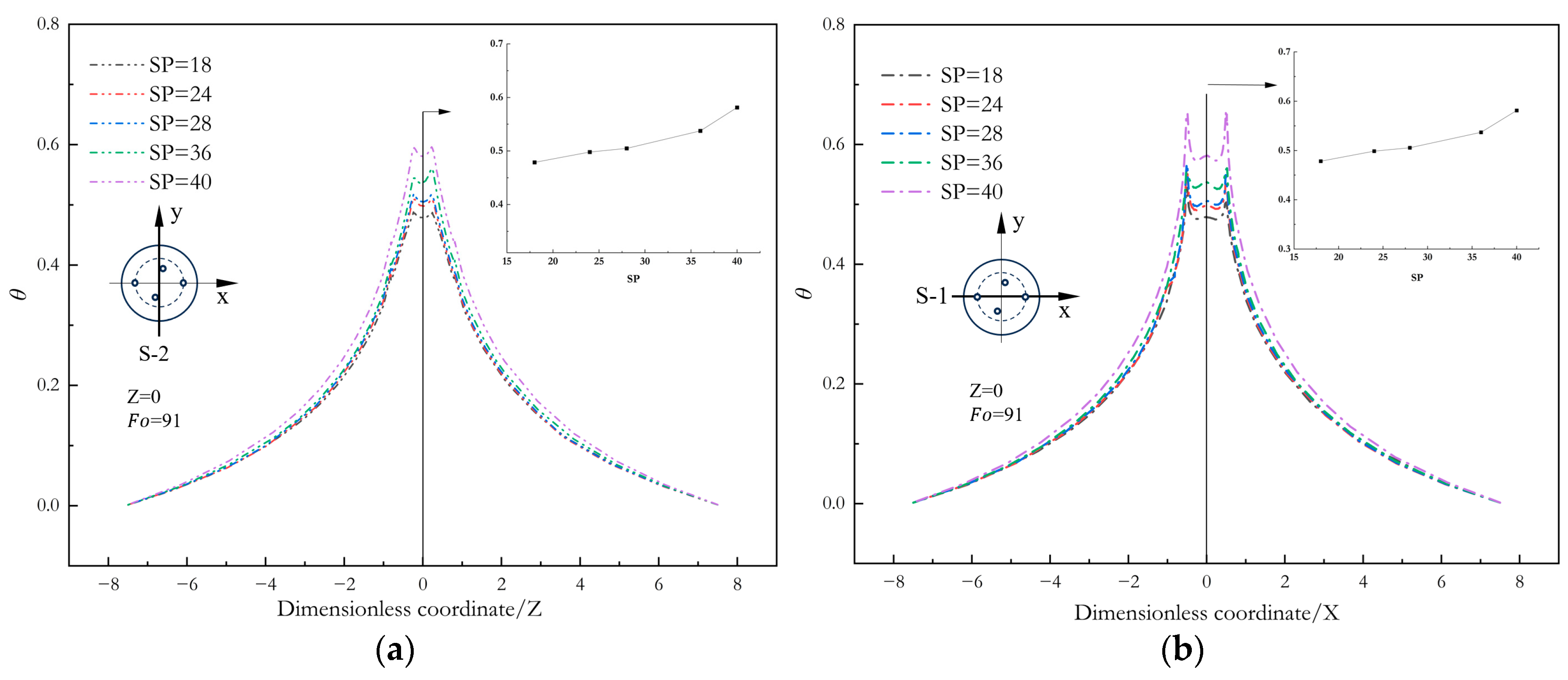
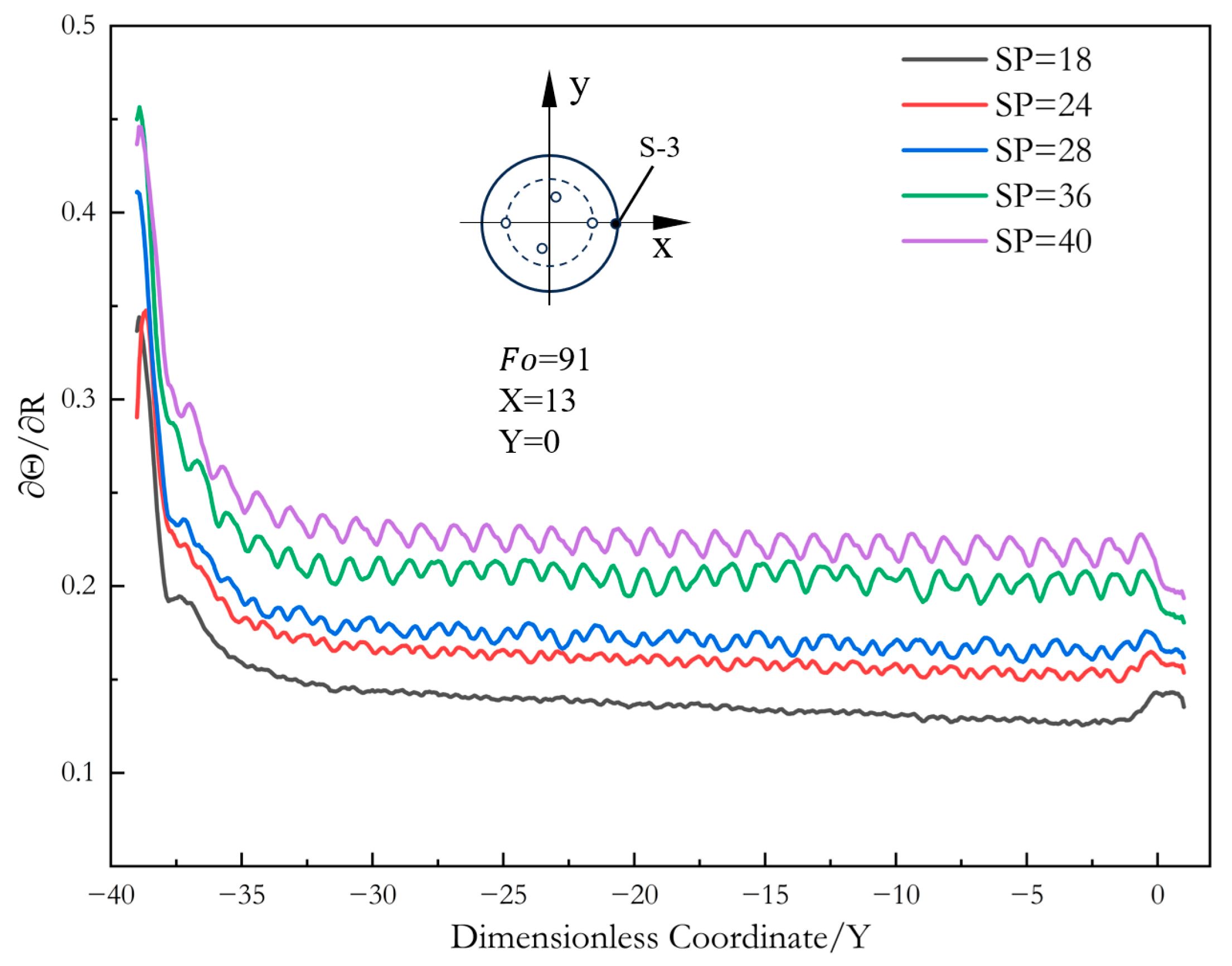



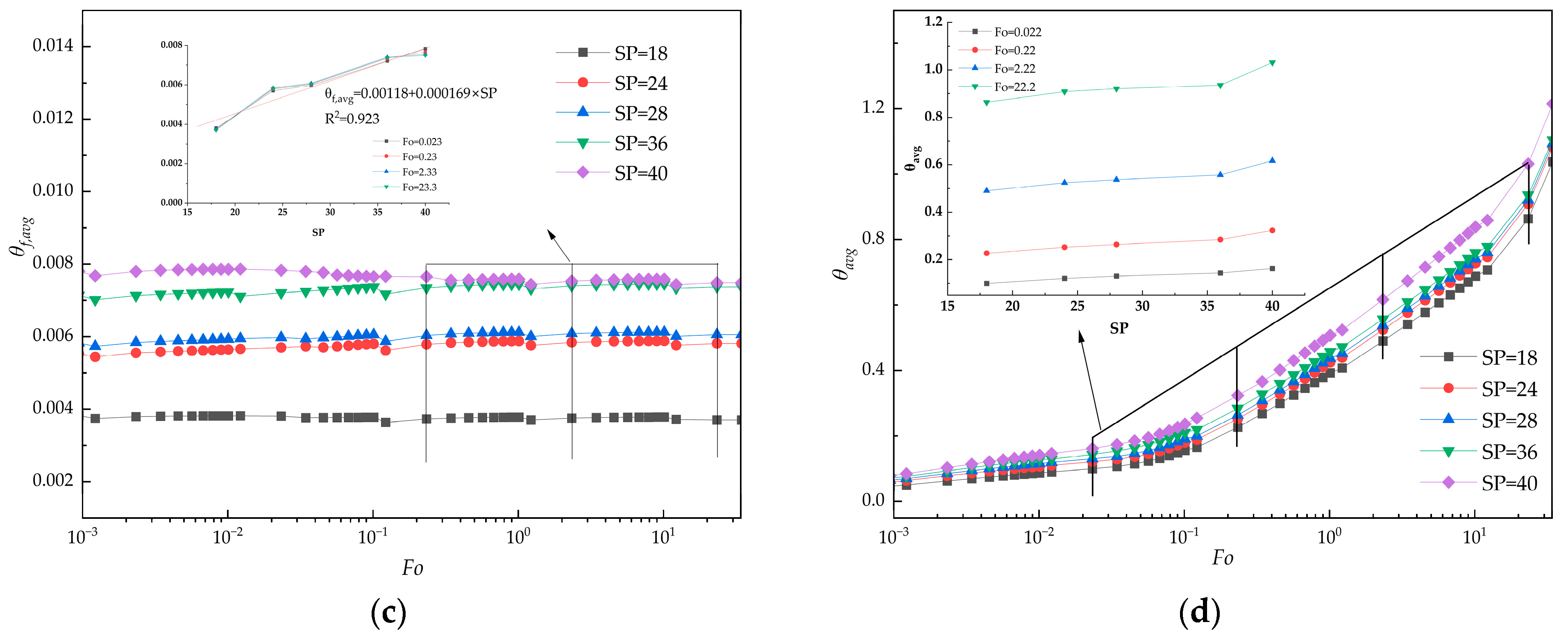
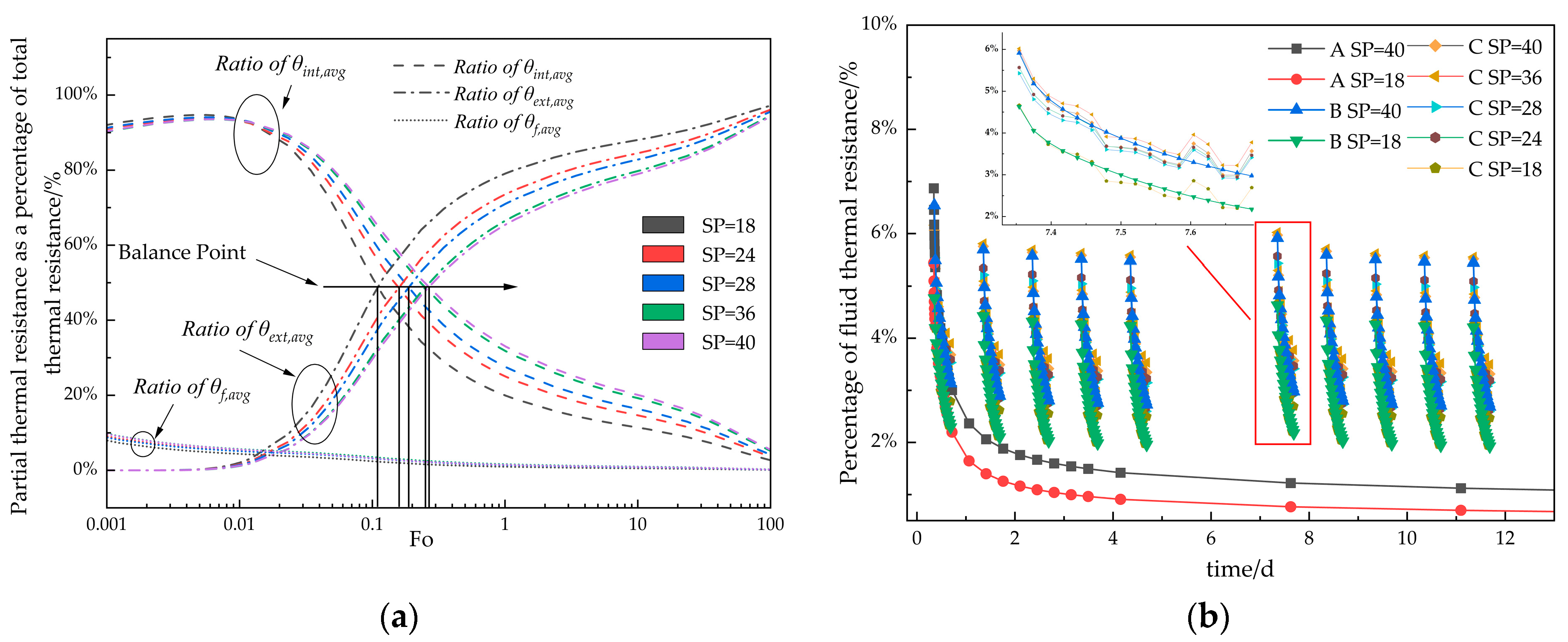
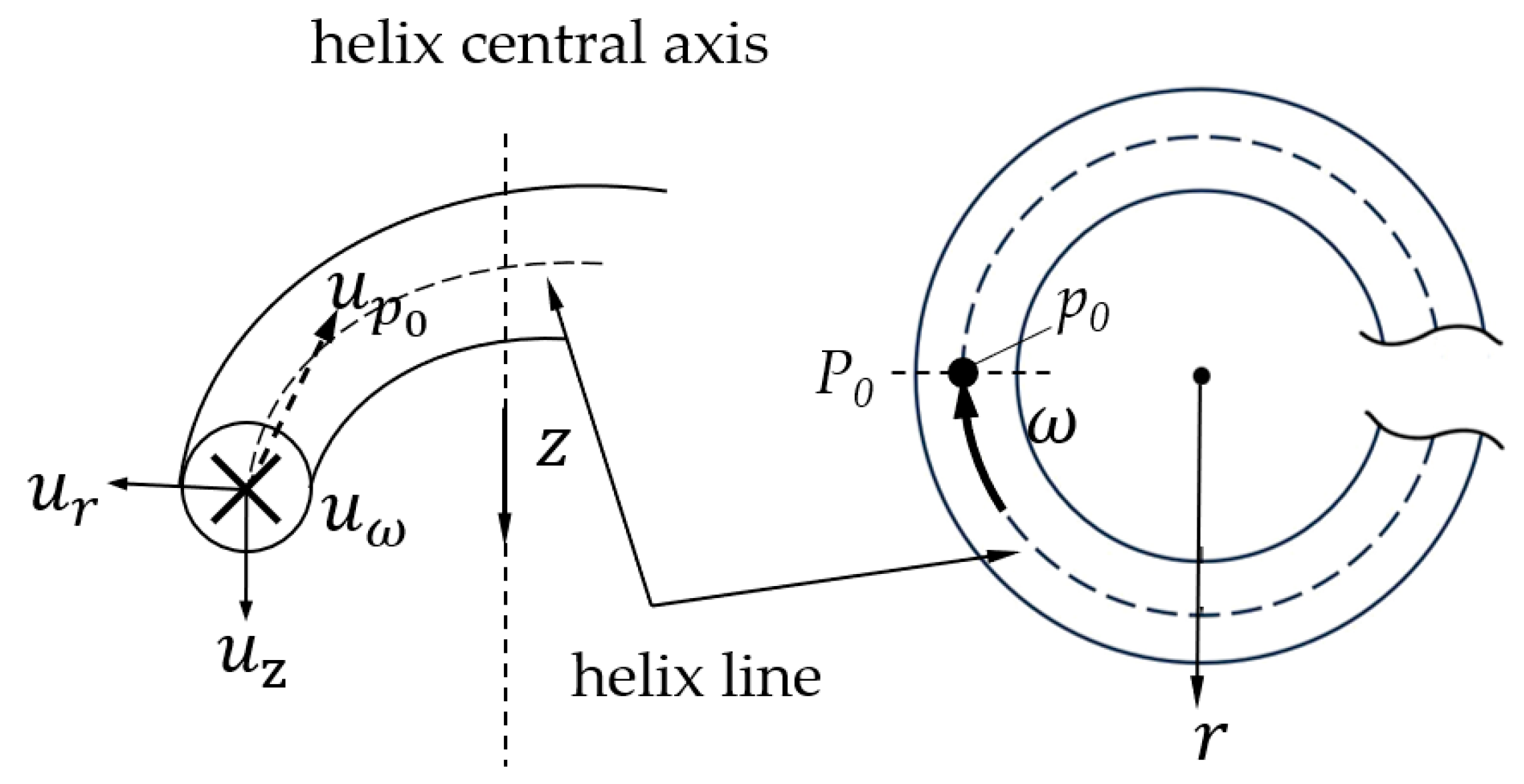
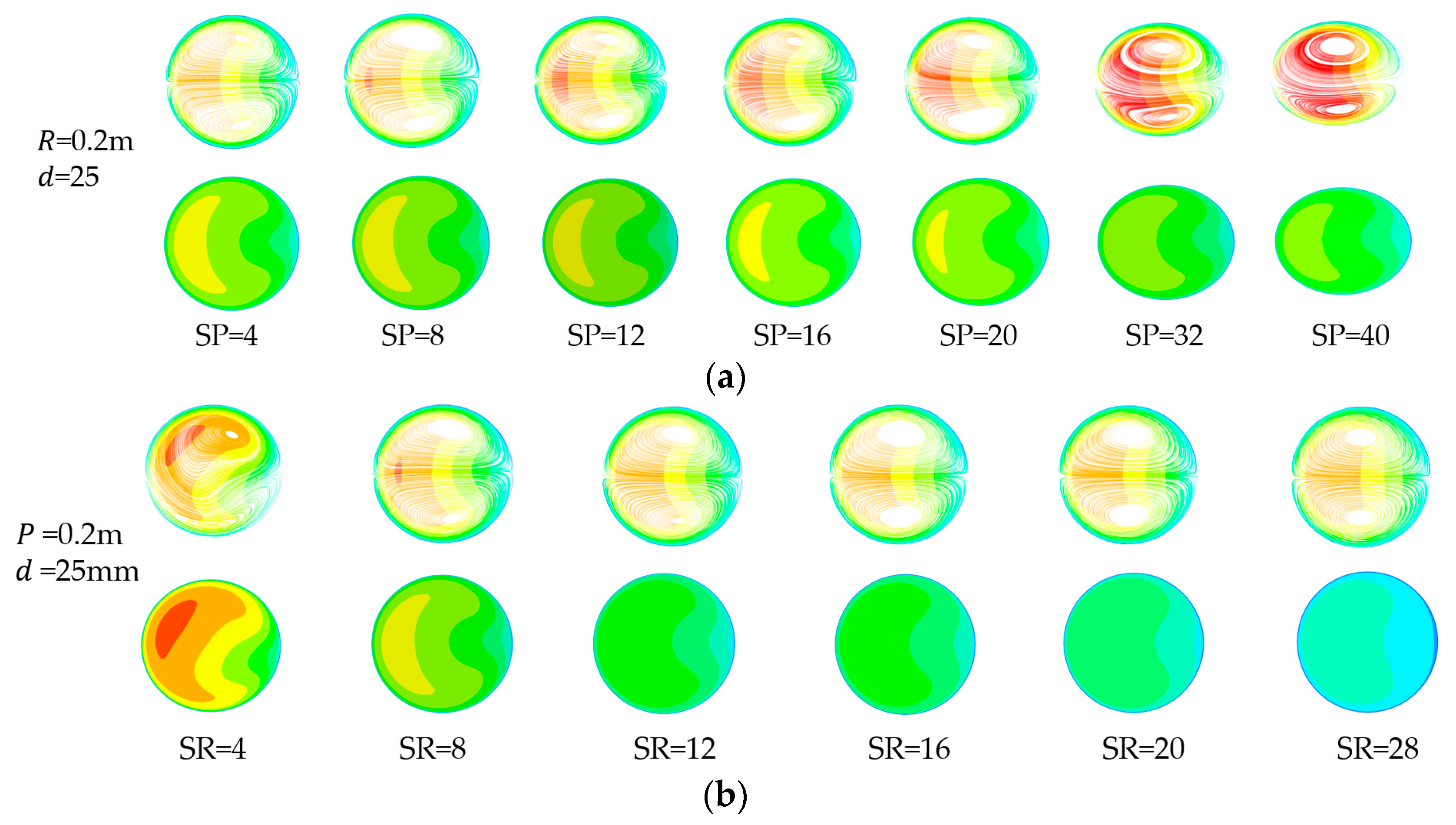
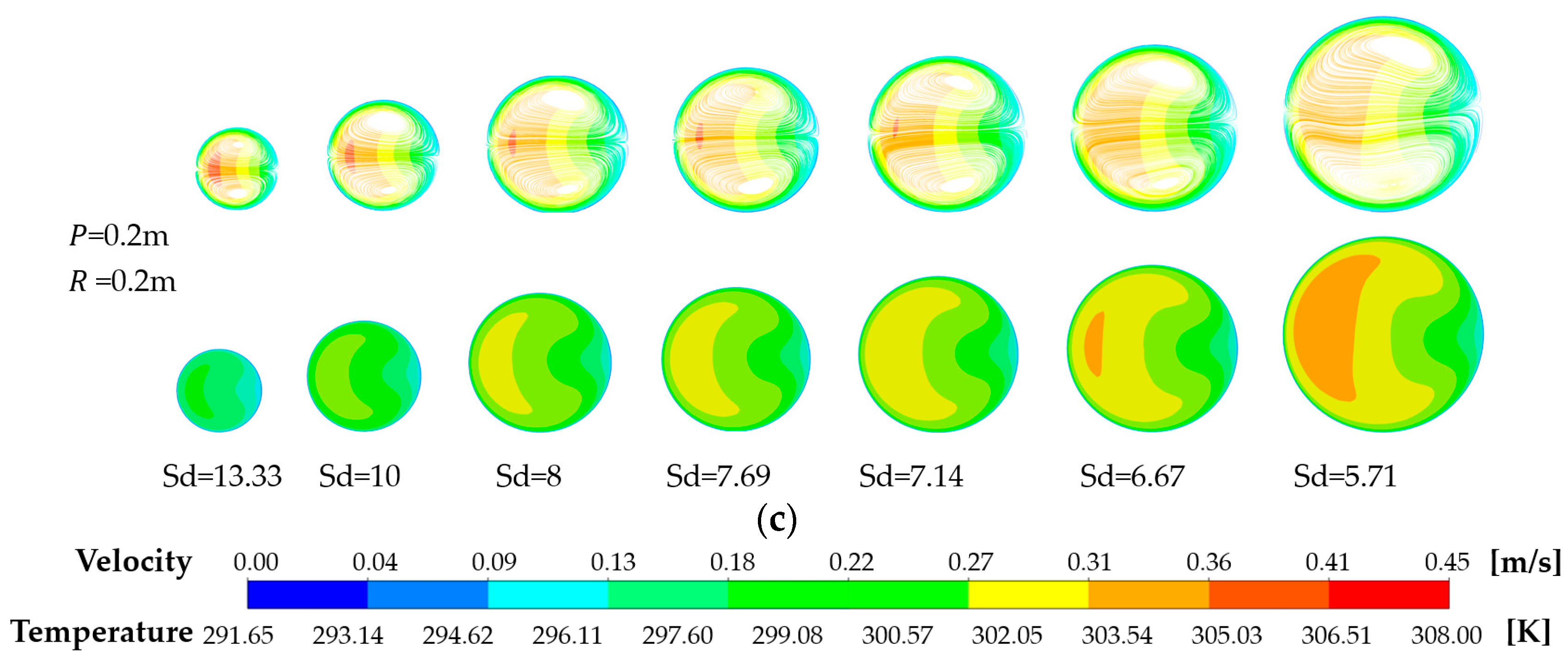
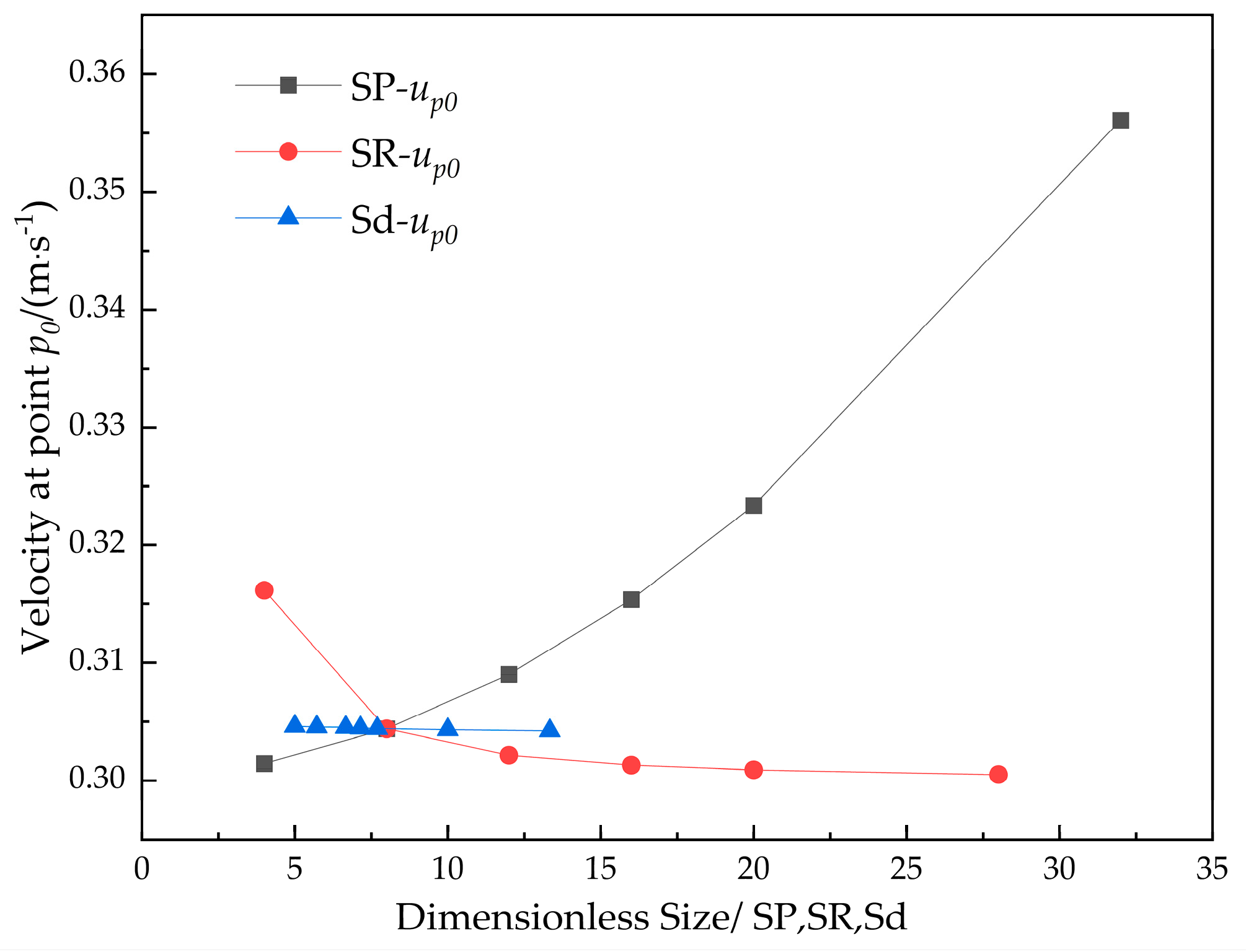


| Parametric | Value | Parametric | Value |
|---|---|---|---|
| Inlet fluid temperature/(K) | 308 | Depth/(m) | 16 |
| Inlet flow velocity/(m/s) | 0.3 | Edge length/(m) | 6 |
| Kinematic viscosity/(Pa∙s) | 0.805 × 10−6 | Helix radius/(m) | 0.2 |
| Pile diameter/(m) | 0.65 | Spiral tube diameter/(mm) | 25 |
| Pr | 5.42 | Helical pitch/P(m) | 0.6 |
| Pile density/(kg/m3) | 2500 | Soil initial temperature/(K) | 291.65 |
| Soil specific heat capacity/(J/kg∙K) | 900 | Soil density/(kg/m3) | 1930 |
| Pile thermal conductivity/(W/m∙K) | 1.97 | Soil specific heat capacity/(J/kg∙K) | 1300 |
| Soil thermal conductivity/(W/m∙K) | 1.92 |
| Time | 8:00 | 9:00 | 10:00 | 11:00 | 12:00 | 13:00 | 14:00 | 15:00 | 16:00 | 16:30 |
|---|---|---|---|---|---|---|---|---|---|---|
| Operating strategy A | 308 (keep all day) | |||||||||
| Operating strategy B | 308 | 308 | 308 | 308 | 308 | 308 | 308 | 308 | 308 | 308 |
| Operating strategy C | 300.03 | 299.64 | 300.13 | 298.98 | 299.13 | 298.95 | 300.42 | 299.52 | 301.12 | 300.91 |
Disclaimer/Publisher’s Note: The statements, opinions and data contained in all publications are solely those of the individual author(s) and contributor(s) and not of MDPI and/or the editor(s). MDPI and/or the editor(s) disclaim responsibility for any injury to people or property resulting from any ideas, methods, instructions or products referred to in the content. |
© 2024 by the authors. Licensee MDPI, Basel, Switzerland. This article is an open access article distributed under the terms and conditions of the Creative Commons Attribution (CC BY) license (https://creativecommons.org/licenses/by/4.0/).
Share and Cite
Wei, P.; Li, K.; Yu, C.; Han, Q. Effect of Different Control Strategies on the Heat Transfer Mechanism of Helical Energy Piles. Appl. Sci. 2024, 14, 2836. https://doi.org/10.3390/app14072836
Wei P, Li K, Yu C, Han Q. Effect of Different Control Strategies on the Heat Transfer Mechanism of Helical Energy Piles. Applied Sciences. 2024; 14(7):2836. https://doi.org/10.3390/app14072836
Chicago/Turabian StyleWei, Pan, Kongqing Li, Chenfeng Yu, and Qiaoyun Han. 2024. "Effect of Different Control Strategies on the Heat Transfer Mechanism of Helical Energy Piles" Applied Sciences 14, no. 7: 2836. https://doi.org/10.3390/app14072836





